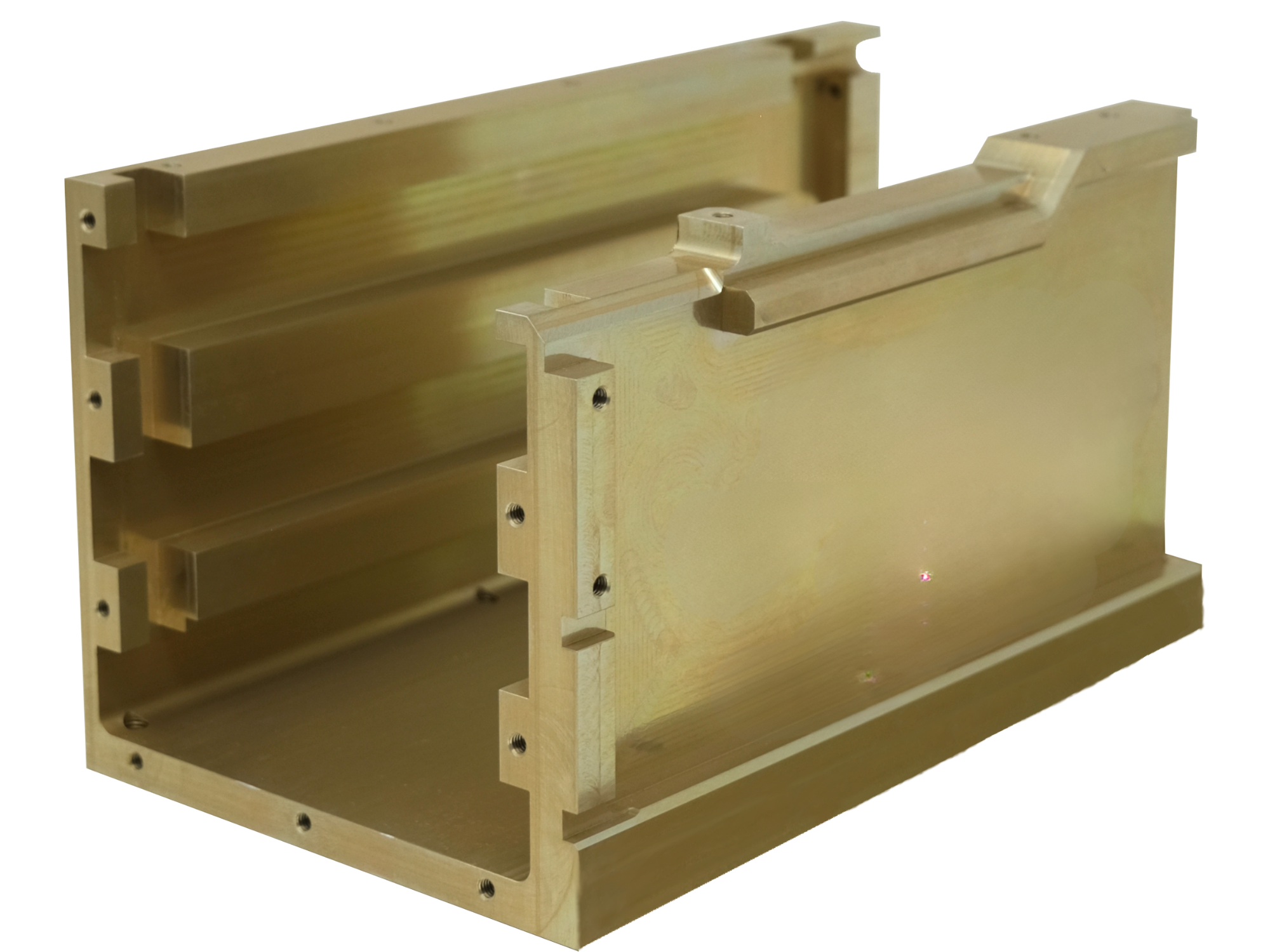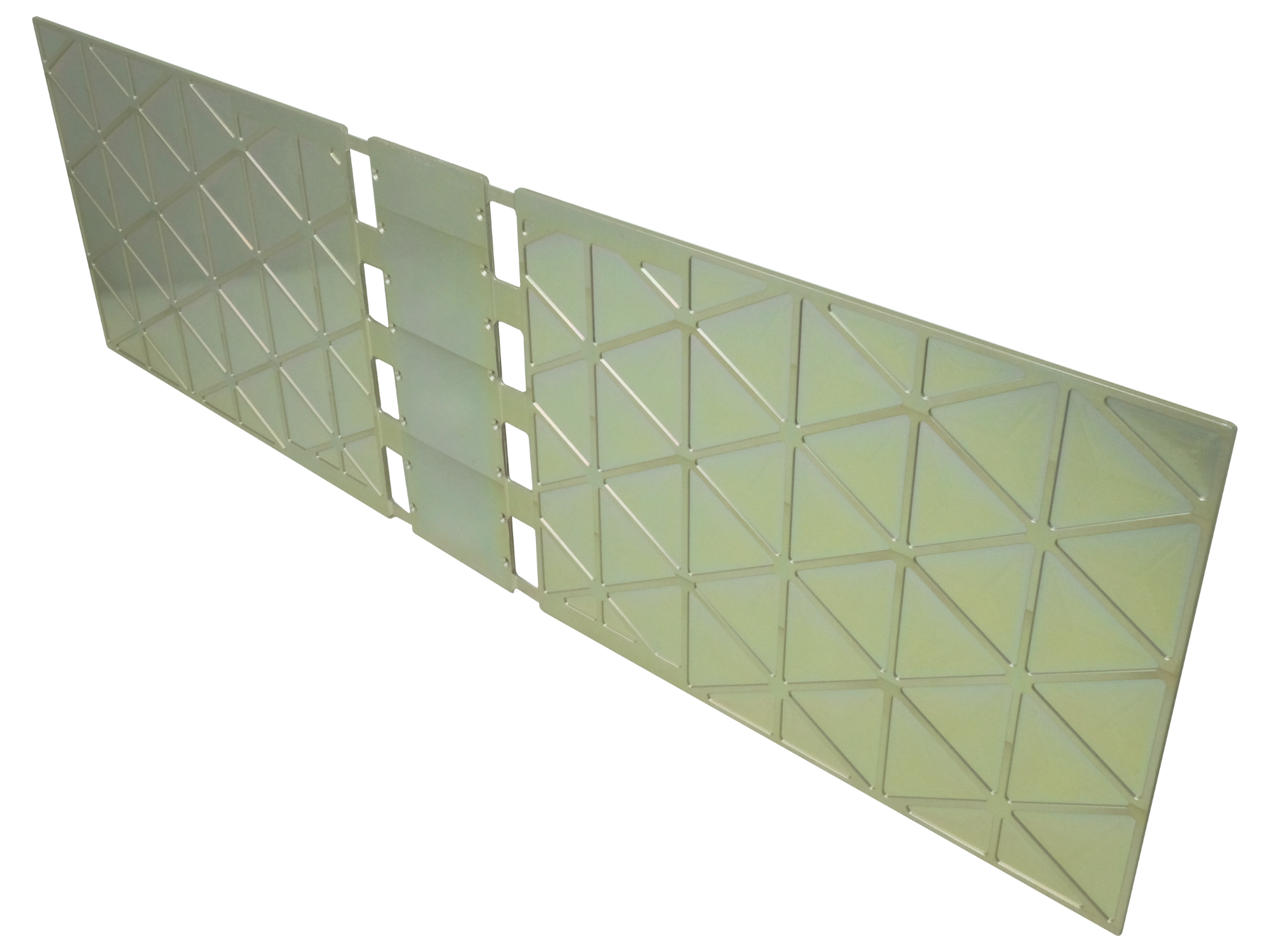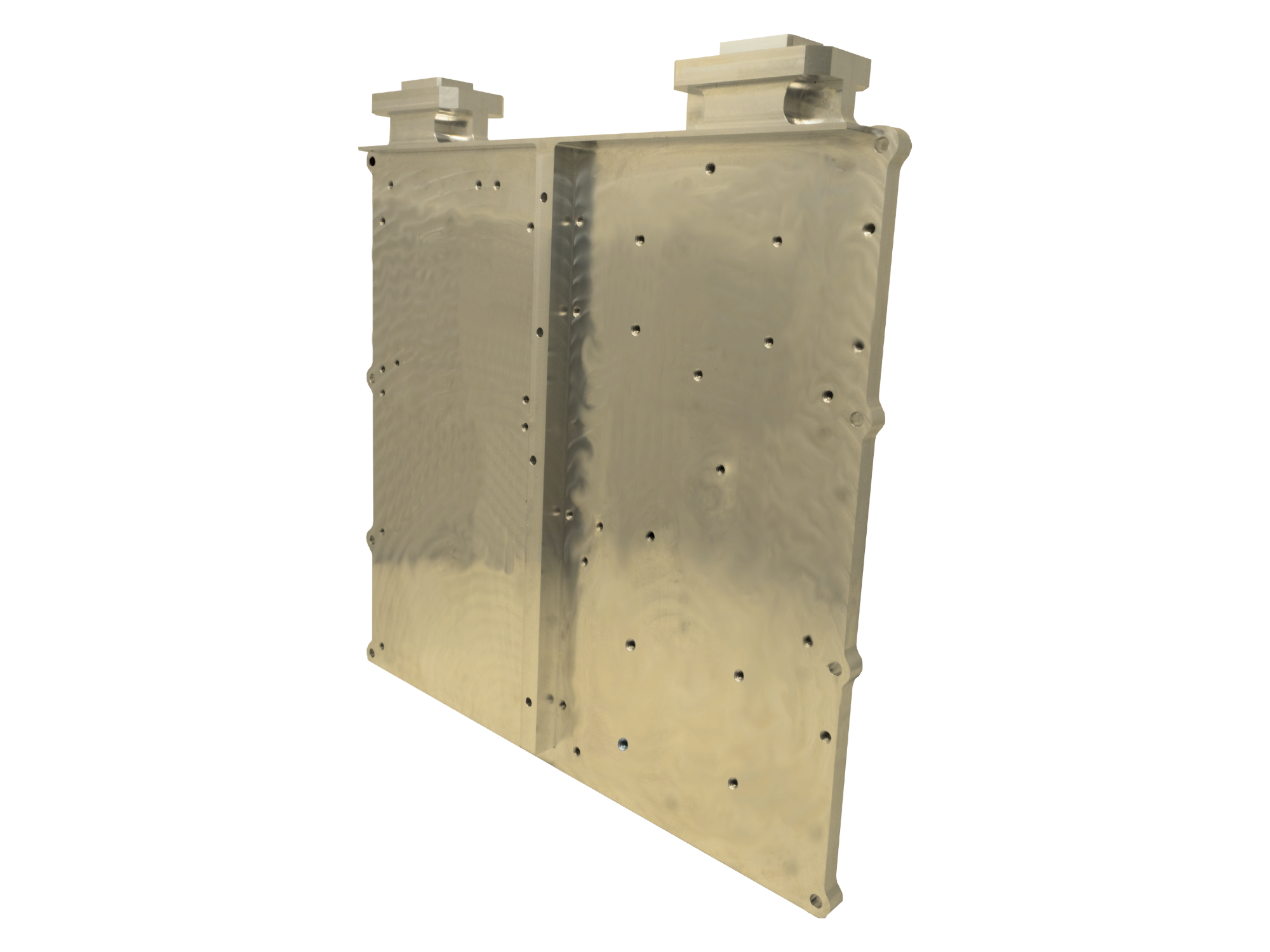
Oscillating Heat Pipes
ThermAvant Technologies designs, models and manufactures thermal-mechanical structures embedded with the oscillating heat pipe (OHP) technology for compact, high power density opto-electronic and power-energy systems.
Explore Oscillating Heat Pipes
Our Oscillating Heat Pipe Products
Since building our first OHPs in 2009, ThermAvant is now recognized as the world leader in OHP design and manufacturing. Our Oscillating Heat Pipe-based products include sinks, spreaders, and thermal straps.
Performance, Features, & Benefits
Thermal conductivity up to +100x base material’s
Gravity insensitivity, tested from 0 to 10 G
Lightweight typ. 30% less than base material
Producible in shapes from <1mm thick to >1m long
Operable at ultra-high heat flux, up to +300W/cm2
Industries & Applications
While most of our customers are in the aerospace and defense industries, OHPs are a versatile and passive heat transfer technology found inside a wide array of devices or systems.
Oscillating Heat Pipe Applications
(device-level) CPU, GPU, LED, laser diode, and microchip device-level cooling
(board-level) Servers, rugged computers, radio frequency (RF) modules, and board-level cooling
(system-level) Aerospace and terrestrial vehicle radiators and system-level heat exchangers
Energy storage and Lithium-ion battery packaging
Phased array antennas embedded with oscillating heat pipes
Avionics heat frames and chassis
Dozens of other thermal-mechanical structures embedded with the oscillating heat pipe for optimized size, weight, and power.
Our OHPs Are Found in a Range of Industries
Aerospace
Defense systems
Radio frequency (RF) and telecommunications systems
Computer and IT systems
Batteries and energy storage systems
Power generation and their heat rejection systems
Laser and optical systems
Research agencies and organizations
Partnering with U.S. government agencies since 2009 to innovate best-in-class thermal solutions.
About Oscillating Heat Pipes
Oscillating Heat Pipe Frequently Asked Questions
-
Oscillating heat pipes (OHPs), also called pulsating heat pipes (PHPs), use pressure-driven, two-phase fluid flow in a channel to rapidly transfer heat between heat sources (e.g. microchips, diodes, waste heat streams, etc.) and heat sinks (air, liquid, deep space, etc.).
OHPs can be built in materials, shapes, and sizes that are not possible with conventional capillary-driven heat pipes or vapor chambers.
As a result, the OHP technology can be embedded into structures as drop-in replacements for their existing solid-state materials and in doing so create multi-functional ones that provide exceptional thermal performance without compromising their mechanical properties.
-
Oscillating Heat Pipes are passive heat transfer devices typically embedded into a material with capillary-sized microchannel pattern (or volume). This volume is partially filled with a saturated working fluid, and its pattern is such that it crosses between the material’s heat source areas and sink areas multiple times. When the microchannel’s cross-sectional shape is properly designed, the saturated working fluid’s liquid “slugs” span its full diameter. Because the volume is only partially filled, the liquid slugs are separated by saturated vapor “plugs” (or bubbles) along the microchannel’s length.
When heat is applied at a source, the internal volume’s local vapor expands, liquid evaporates, and even boiling may occur - all increasing the pressure and moving fluid away from the source toward the cooler, lower pressure areas near the material’s sink. There, relatively warm, incoming vapor contracts and condenses at the sink’s temperature and fluid’s saturated pressure. These pressure instabilities cause the fluid to rapidly move along the channel length with random changes in direction. The result is highly efficient sensible heat transfer from the liquid slugs movement as well latent heat transfer at the phase change sites. By routing the channel between the heat sources and sinks a sufficient number of times, these random pulsations result in stable operation.
As for their mechanical properties, the array of internal microchannels with walls between such microchannels results in lightweight “i-beam” structures. This results in a high compressive strength, similar to the base material itself. If needed, the configuration of microchannels can be routed in flat, 2D or more complex, conformal 3D geometries so that heat can be spread or transferred in multiple directions.
-
Oscillating heat pipes are similar to conventional heat pipes, vapor chambers (VCs) or constant conductance heat pipes (CCHPs), and loop heat pipes (LHPs):
• Passive heat transfer devices: all heat pipes utilize a hermetically sealed saturated working fluid to transfer heat between heat sources and sinks without the aid of power-consuming pumps, fans, etc.
• Working fluid limits: all heat pipes have fluid-based constraints - e.g., the fluid must be compatible with the base material, its operation is limited by lower temperature (freezing point) and upper temperature (critical point), and for a given design the power and performance varies by temperature..
Oscillating heat pipes are different from CCHPs and LHPs in several ways:
• High power capability: OHPs can operate with (10s to 100s W/K) across a wide range of heat fluxes (<1 W/cm2 to >300 W/cm2) and heat loads (<1 W to >1000 W) not possible with other heat pipes
• Thin form-factor: The small channel size of the OHP enables designs as thin as <1 to <4mm without sacrificing performance
• Greater structural integrity: The channel size of an OHP is smaller than the cavity size in other heat pipes resulting in a shorter unsupported length and therefore greater structural integrity than other heat pipes
• Gravity independence: OHPs can be designed to work independent of gravitational orientation and in high adverse acceleration environments
• No wick: The OHP does not require a wicking structure which reduces manufacturing complexity
-
Oscillating Heat Pipes (OHPs) are versatile thermal management devices used for efficient heat transfer. They find applications in cooling opto-electronic, RF and power-energy components, such as microprocessors, Li-ion cells, lasers, inverters/converters, and power amplifiers, where maintaining optimal operating temperatures is crucial, but the size weight and power (SWaP) of the thermal management technology must be limited.
OHPs are also often used when power density (W/cm2 or W/cm3) must be maximized with minimal heat pipe thickness.
OHPs are particularly valuable in spacecraft, as they can passively dissipate heat in the vacuum of space. They're also used in various terrestrial and airborne applications, including in electronics cooling, battery systems, and photonics systems. OHPs provide a compact, reliable, and energy-efficient solution for cooling and thermal management in a wide range of industrial and technological settings.
-
In the world of heat transfer technology, Pulsating Heat Pipes (PHPs) and Oscillating Heat Pipes (OHPs) often seem to be distinct entities. However, they are the same technology.
In practice, both terms are interchangeable, and engineers, researchers, and manufacturers may use one or the other to refer to this efficient heat transfer solution. What's most crucial is understanding the concept and applications of this technology, regardless of whether it's called a PHP or OHP.
-
The thermal performance of an oscillating heat pipe refers to its ability to efficiently transfer heat. It depends on factors like the working fluid, geometry, orientation, and operating conditions. Generally, OHPs can operate with conductances of 10s to 100s W/K, across a wide range of heat fluxes from <1 W/cm2 to >300 W/cm2, and with a wide range of heat loads (<1 W to >1000 W). This makes them effective for cooling applications in various industries, such as electronics and aerospace, where efficient heat transfer is crucial for maintaining optimal temperature levels.
Figure 1. Visualization of Working OHP
Figure 2. Structural OHP with 3D routing
-
Al and Al composites (from 0 to T6 temper)
Cu and Cu composites, including Copper-Molybdenum
Titanium
Stainless steel
Ni alloys, including Invar and Kovar
Low-CTE refractory metals, including Molybdenum (Mo) and Tungsten (W)
High-temperature metals
Ceramics and semiconductors
-
Water
Ketones
Alkanes
Alcohols
Hydrochlorofluorocarbons
Perfluorocarbons
Hydrofluorocarbons
More from cryogenics (below 100 K) to liquid metals (above 1,000 °C)
-
Heat fluxes range from less than 1 W/cm2 to greater than 300 W/cm2
Heat loads per OHP from 1 watt to greater than 10,000 watts
Long-distance OHPs operable at 2 cm length to 2 m length
Gravity independent (e.g., 0.3 m OHPs successfully tested at 9g of adverse gravity and 1.2m OHP successfully tested at 1g adverse gravity)
-
From less than 1 mm in thickness to up to 2 m in length
Customizable widths from less than 2 cm to greater than 1 m
Flat or 3D plate with bosses, through or blind holes, dielectric substrate, etc.
Platings and dielectric coatings
Ceramic substrates
Other features (e.g., integral fin structures, fans, thermoelectrics, etc.)
Technical Specifications
Technical Resources
Our team of scientists and engineers has published many OHP resources. Check out each one to learn more about these advanced cooling techniques.
“Intermediate Temperature Oscillating Heat Pipe Radiators for Lunar Fission Surface Power” presented by Alex Miller (PI) at the Thermal & Fluids Analysis Workshop TFAWS
“Oscillating Heat Pipe Thermal Performance and Stability Limits” - article by Joe Boswell, Bruce Drolen, and Ross Wilcoxon. Read it on ieeexplore.ieee.org or electronics-cooling.com
Oscillating Heat Pipes – textbook by Dr. Hongbin Ma.
CCA Heat Sinks Embedded with Oscillating Heat Pipes – article featured in Electronics Cooling
AFRL, industry launch revolutionary spacecraft technology - Oscillating Heat Pipes – article featured in Wright-Patterson AFB
AIAA Thermophysics video of “Neutron Imaging based visualization of an Oscillating Heat Pipe in operation carrying 400W” provided courtesy of Professor Hongbin Ma (University of Missouri)
Thermal spreader designed to solve spacecraft thermal challenges by ThermAvant Technologies. Photo courtesy of afrl.af.mil
ThermAvant Tech News
The Oscillating Heat Pipe Leader
ThermAvant Technologies is the world’s leading oscillating heat pipe provider. We handle every stage — product development and design, manufacturing, and testing.
































